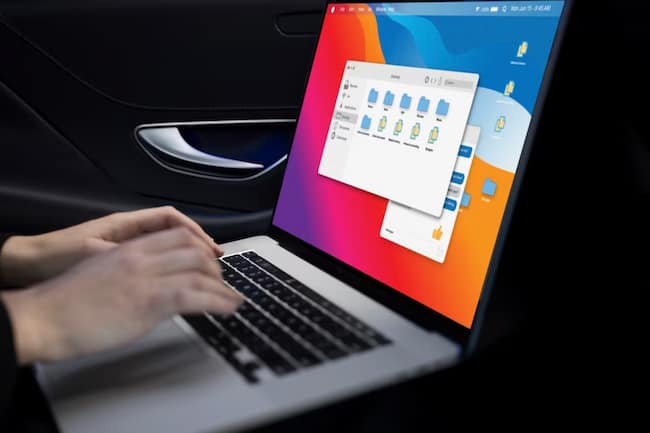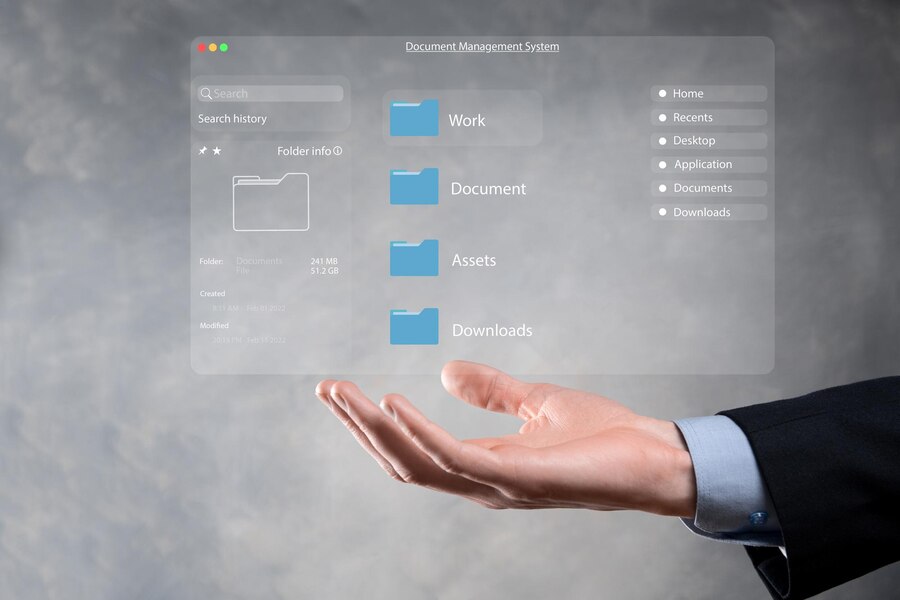DAT files are a common format, but understanding them can be challenging. This introduction will explore the basics of DAT files and their various types.
Discover how these files hold crucial information and learn about the different categories they fall into.
By gaining a clearer understanding of DAT files, you’ll be better equipped to navigate and open them on your Windows operating system. Get ready to unlock the mysteries of DAT files!
Key Takeaways:
- There are different types of DAT files, and it is important to understand their differences for effective file handling.
- Text-based DAT files can be opened using common text editors like Notepad or online tools for handling Winmail.dat files.
- Video-based DAT files can be opened using media players like VLC or specific programs tailored for working with video DAT files.
- File converters are available if you need to convert a DAT file to a different format, but be aware of their limitations.
- Renaming DAT files can help with file recognition, but it’s crucial to know the source and consider any file locks or configuration file concerns.
- Understanding the source and being mindful of potential file locks and configuration file issues is essential when manipulating DAT files.
Understanding Different Types of DAT Files
Different Types of DAT Files can be understood by looking at the various formats they can take. It depends on the kind of data they contain and the program that created them.
A table can help understand these DATs:
| File Type | Description |
|---|---|
| Text-based DAT Files | Logs, config settings, or data from other programs. |
| Video-based DAT Files | Video data. Special media players or programs for playback. |
There may be extra details not covered here.
DAT files have been used for a long time. They were made as a generic way of storing data. Over time, different software started using them for their purposes, leading to different DAT types.
By understanding these types, users can use the right tools and techniques for opening or converting them.
Unveil the power of your words and crack open text-based DATs with these fun methods.
Methods for Opening Text-based DAT Files
When it comes to opening text-based DAT files, there are different methods you can try.
In this section, we’ll explore two sub-sections: using Notepad or text editors and utilizing online tools for Winmail.dat files.
Whether you prefer a simple, desktop-based solution or the convenience of online tools, we’ve got you covered.
Let’s dive in and discover the various approaches to successfully accessing the content of DAT files in Windows.
Using Notepad or Text Editors
When tackling DAT files, there are various options. Windows offers built-in software like Notepad and Wordpad – pre-installed on most systems. These text editors are perfect for accessing the contents and making modifications.
Third-party text editors like Sublime Text or Atom provide more features for editing and manipulating text files.
Plus, you can open DAT files with online tools like Google Docs or Microsoft Word Online. This is especially useful if you can’t access text editors or prefer working on the web.
But, Notepad or other text editors might not always render the data correctly. The file structure varies depending on the source and intended use. So, check the integrity and compatibility before making any changes.
Pro Tip: Make a backup of the original file before editing with Notepad or any other text editor. This is to avoid any unintended changes during the process.
In conclusion, opening and working with DAT files is like open-heart surgery on a text document – but with less blood and more confusion!
Utilizing Online Tools for Winmail.dat Files
Utilize online tools to open and access Winmail.dat files. These tools offer a simple solution for users who don’t have the correct software.
- Upload the DAT files to websites that offer conversion services.
- Convert the file to a more accessible format, e.g., PDF or TXT.
- Open and view the contents with the preferred software.
- Or, use specialized email services to forward the attachment.
- Automatically decode and extract the contents.
- Access them through an email account.
Be sure the online tools are reputable and secure. Verify the website or service before uploading any information.
Exercise caution when downloading converted files – they may contain malicious content. Unlock video-based DAT file secrets with player tricks and program tactics.
Opening Video-based DAT Files
Opening video-based DAT files can be a breeze, especially with reliable media players like VLC.
Dive into this section to easily discover the ins and outs of handling video DAT files.
From understanding the compatibility of various media players to exploring specific programs geared toward video DAT files, you’ll soon be on your way to seamless access and playback.
Using Media Players like VLC
Media players like VLC are the perfect choice for opening video-based DAT files. It has a user-friendly interface that supports a wide range of formats, making it very versatile. Plus, VLC ensures a smooth and uninterrupted viewing experience.
VLC is better than other media players because it can easily decode and play DAT files. With just one click, it can recognize the file format and start playback.
It also has advanced features like customizable audio and video settings, subtitles support, and screen capture options.
VLC is compatible with all major operating systems, making it ideal for users who work across different platforms or share files with others.
In conclusion, VLC is great for viewing DAT files. Its codec support, user-friendly interface, and cross-platform compatibility make it an ideal choice.
So if you encounter a video DAT file, consider utilizing VLC for easy playback. Get ready to enjoy video magic!
Exploring Specific Programs for Video DAT Files
It’s possible to explore programs for opening and viewing video DAT files. These programs are designed to handle the unique characteristics of video DAT files and give a smooth watching experience.
A table could show some programs accessible for video DAT files. The table could have Program Name, Supported File Formats, and Features columns. By using these programs, people can easily view their video DAT files.
Along with the general methods mentioned above, some unique details exist when exploring programs for video DAT files.
Each program could have its features and capabilities, so it’s important to pick one that meets your needs and requirements.
Let’s look into the history of exploring programs for video DAT files. As technology improved, developers saw the need for software to handle video DAT files.
This caused the creation of various programs designed especially for opening and playing these files with no issues.
The availability of these programs has made it much easier to access and enjoy multimedia content when dealing with video DAT files.
Converting DAT Files to Different Formats
Discover the art of converting DAT files to different formats. Uncover the limitations of file converters and learn how to rename DAT files for better recognition.
With these essential tips, you can effortlessly transform your DAT files into desired formats.
File Converters and their Limitations
File Converters are essential programs that help users convert DAT files into other formats. They offer a convenient solution for accessing and editing such files.
It is important to recognize the limitations associated with using these converters. The following table highlights the most common limitations:
| Limitations | Explanation |
|---|---|
| Loss of Data | Conversion of DAT files to other formats may result in data loss. This happens when the chosen format does not support certain elements or features of the original file. |
| Formatting Issues | File converters may not preserve the original formatting of the DAT file. Thus, the converted file may become distorted or inconsistent, making it hard to understand. |
| Compatibility Constraints | Different file formats have different compatibility requirements. The desired output format may not fully support features or functions in a DAT file. This can lead to compatibility issues. |
These limitations may differ depending on the converter and the characteristics of the DAT file.
Despite this, file converters are a good option for accessing and modifying DAT files. They enable users to convert files into formats that better suit their needs.
Moreover, applications like email clients or media players often create DAT files. Knowing the source of a particular DAT file can help unveil its structure and purpose.
Now, it is time to give the DAT file a new name. Open the mysterious vault of digital treasures!
Renaming DAT Files for Recognition
To ensure proper recognition and readability of DAT files, it may be necessary to rename them.
This involves changing the file extension or adding descriptive names that reflect the content or purpose of the file.
This allows for easy identification and organization of DAT files. Here is a 4-step guide to renaming DAT files for recognition:
- Understand the file content: Analyze the data within the file. Consider any associated programs or systems that use it.
- Change the file extension to indicate its video format (e.g., .mp4 or .avi).
- Add a descriptive name: Add a descriptive name alongside the original filename. This can provide additional context.
- Maintain compatibility: Avoid altering any critical information contained within the file.
Unique details about renaming DAT files: Consider potential conflicts with existing filenames. Maintain consistency in naming conventions for effective organization.
History about renaming DAT files: No standardized approach led to difficulty in managing these files efficiently.
Various techniques were developed over time to improve organization through efficient renaming methods.
Remember, dancing with shadows is like mastering DAT files. You can open locked doors and uncover hidden treasures with the right moves!
Considerations for DAT File Manipulation
When manipulating DAT files on Windows, there are key considerations to remember.
Understanding the file source, dealing with file locks, and addressing configuration file concerns are all essential aspects of successful DAT file manipulation.
This section will explore these factors and provide insights to help you navigate the intricacies of working with DAT files effectively.
Importance of Knowing the File Source
Knowing the source of a DAT file is essential. It helps with data management and security. It lets us assess the reliability and any associated risks. It also allows us to make informed decisions.
We must be aware of the file source. This ensures data integrity and stops any possible security breaches.
Different sources have different levels of trustworthiness. So, it’s important to verify the sender’s credibility.
Moreover, it’s key when dealing with sensitive info or confidential data. Knowing the origin helps protect against malicious software or viruses. This empowers users to take appropriate safety measures.
Lastly, understanding the source helps trace history and any modifications. This is valuable for discrepancies or version control. We can track changes and make sure our data is accurate.
Fact: Identifying an unreliable source before opening a DAT file can help prevent cyberattacks. (Reference: Article Unlock the mystery of file locks and configuration file concerns to avoid getting locked out of your DAT files because being locked out is the real horror story.)
File Locks and Configuration File Concerns
DAT file manipulation requires special consideration of file locks and config files. File locks help maintain data integrity and avoid conflicts when handling DATs.
This is especially important when certain programs have protocols to prevent multiple users from accessing the file simultaneously.
Configuration files contain settings and parameters that direct how data is processed and shown.
Thus, it is essential to handle them cautiously to stop accidental alterations that could influence the DAT file’s performance.
To manage issues related to file locks and config files, one must understand the unique aspects of each DAT file’s source.
This understanding can help users be aware of any protocols or restrictions associated with a particular program or source.
Knowing this, users can successfully manage and manipulate their DAT files without damaging their usability or integrity.
Conclusion and Final Tips
When opening and reading DAT files in Windows, one must pick the right approach. For plain text-based DAT files, Notepad can work.
However, specialized software is needed for complex DAT files with binary or non-readable data. Research and pick the right software for the DAT file’s specific requirements.
Tips for working with DAT files include understanding the file’s specifications and requirements.
One may need to consult official documentation or seek help if the DAT file’s format or purpose is unclear.
The scope of Windows operating systems has seen DAT files used in many ways, from storing config settings to data containers.
Solutions have been developed to help with access and interpretation. The evolution of DAT file management is key in the ever-changing landscape of Windows operating systems.
Some Facts About How to Read and Open. DAT Files in Windows:
- ✅ A . DAT file can store various types of information, including audio, video, PDFs, and more. (Source: Team Research)
- ✅ .DAT files can be text-based or video-based, requiring different methods for opening them. (Source: Team Research)
- ✅ Text-based DAT files can be opened with text editors like Notepad, Notepad++, or VS Code. (Source: Team Research)
- ✅ Video-based DAT files can be opened with media players or video editors like VLC or EaseUS Video Editor. (Source: Team Research)
- ✅ DAT files may contain special data that the software needs and not all DAT files need to be opened. (Source: Team Research)
FAQs about How To Read And Open. DAT Files In Windows
How can I open a . DAT file in Windows?
To open a . DAT file in Windows, you need to determine its file type. You can use standard text editors like Notepad, Notepad++, or VS Code if it is a text-based file. For video-based DAT files, you can use media players such as VLC Media Player or video editors like EaseUS Video Editor. If the DAT file contains images, you can use image viewers like Microsoft Photos or IrfanView.
What programs can I use to open a text-based DAT file?
To open a text-based. DAT file, you can use programs like Notepad, Notepad++, or VS Code. These standard text editors allow you to view and edit the file’s contents.
How do I open video-based . DAT files?
If you have a video-based. DAT file, you can open it using media players or video editors. Programs like VLC Media Player or EaseUS Video Editor are suitable for opening and editing video-based DAT files.
Can I open a . DAT file that contains email attachments?
Yes, you can open a . DAT file that contains email attachments. If you receive a winmail.dat file as an email attachment, you can upload it to a website like Winmaildat.com for analysis. The website will extract and display the file’s contents for you to download.
Is it possible to convert a . DAT file to a different format?
You can convert a .DAT file to a different format using a file converter. However, it’s important to note that converting a .DAT file may render it unusable, especially if it contains configuration data. Exercise caution when converting .DAT files.
What should I do if I encounter issues opening a . DAT file?
If you encounter issues opening a .DAT file, you can try updating or repairing the associated applications. Ensure you have the correct default program set for opening the file type. If the file is corrupt or the original contents are unknown, opening it may involve trial and error.
Table of Contents



